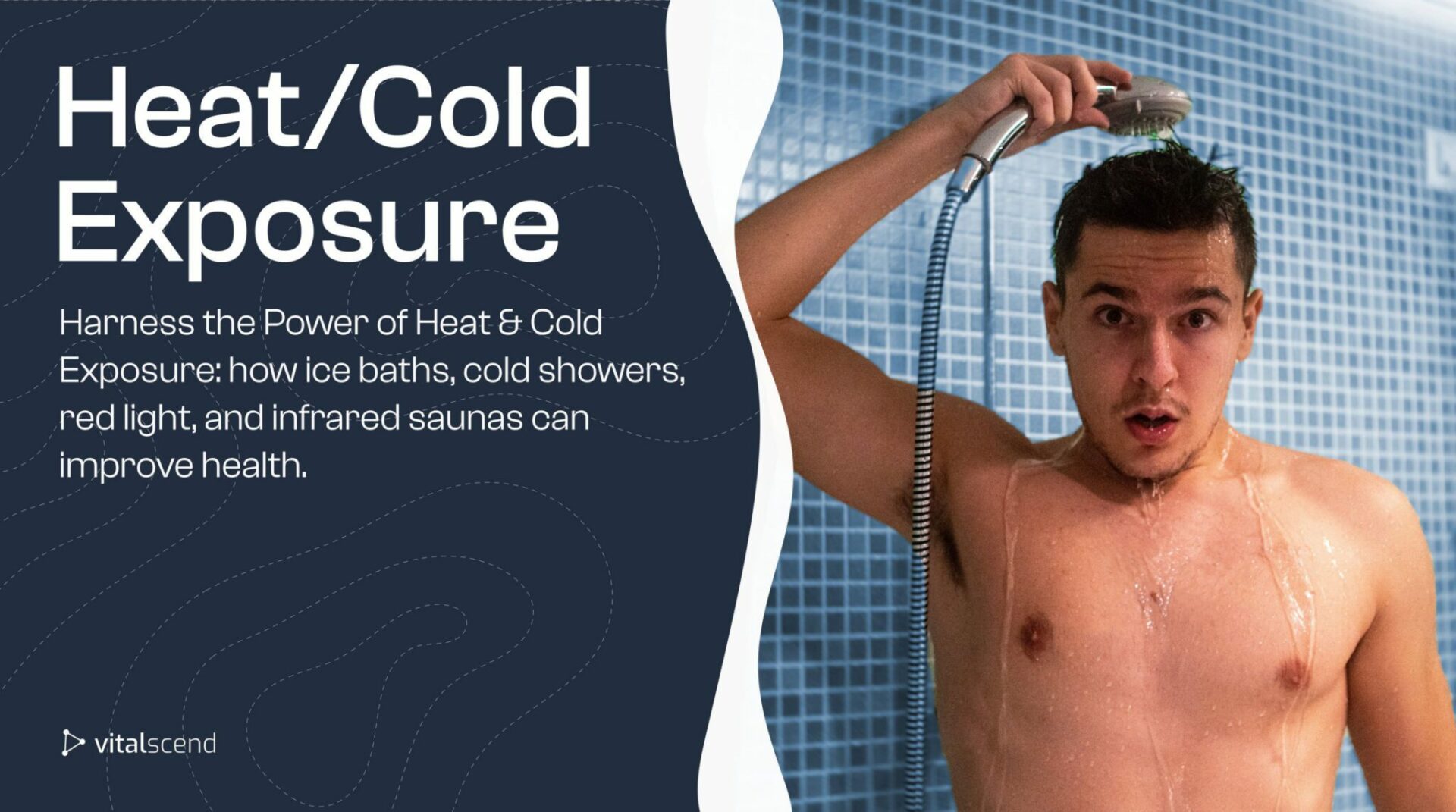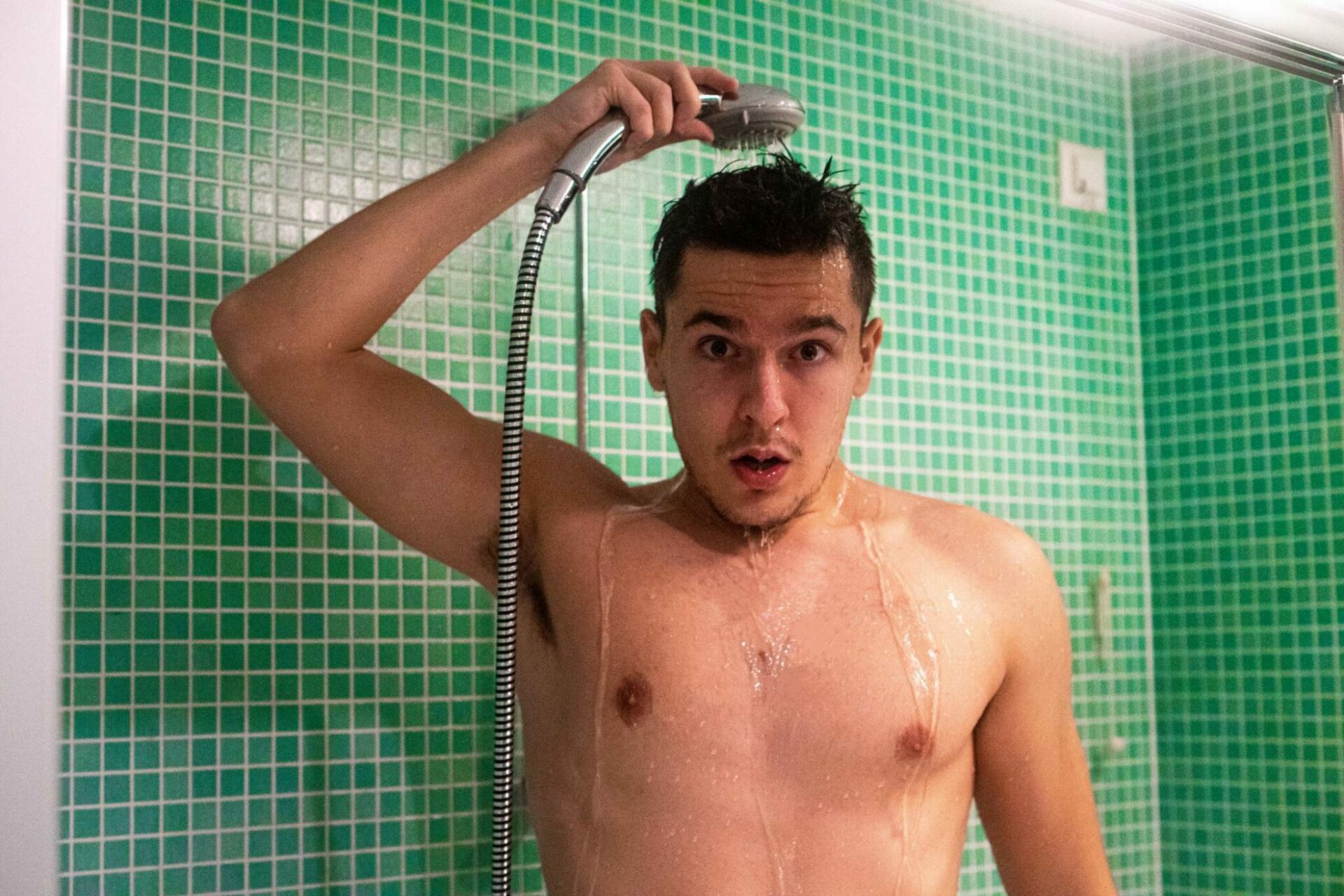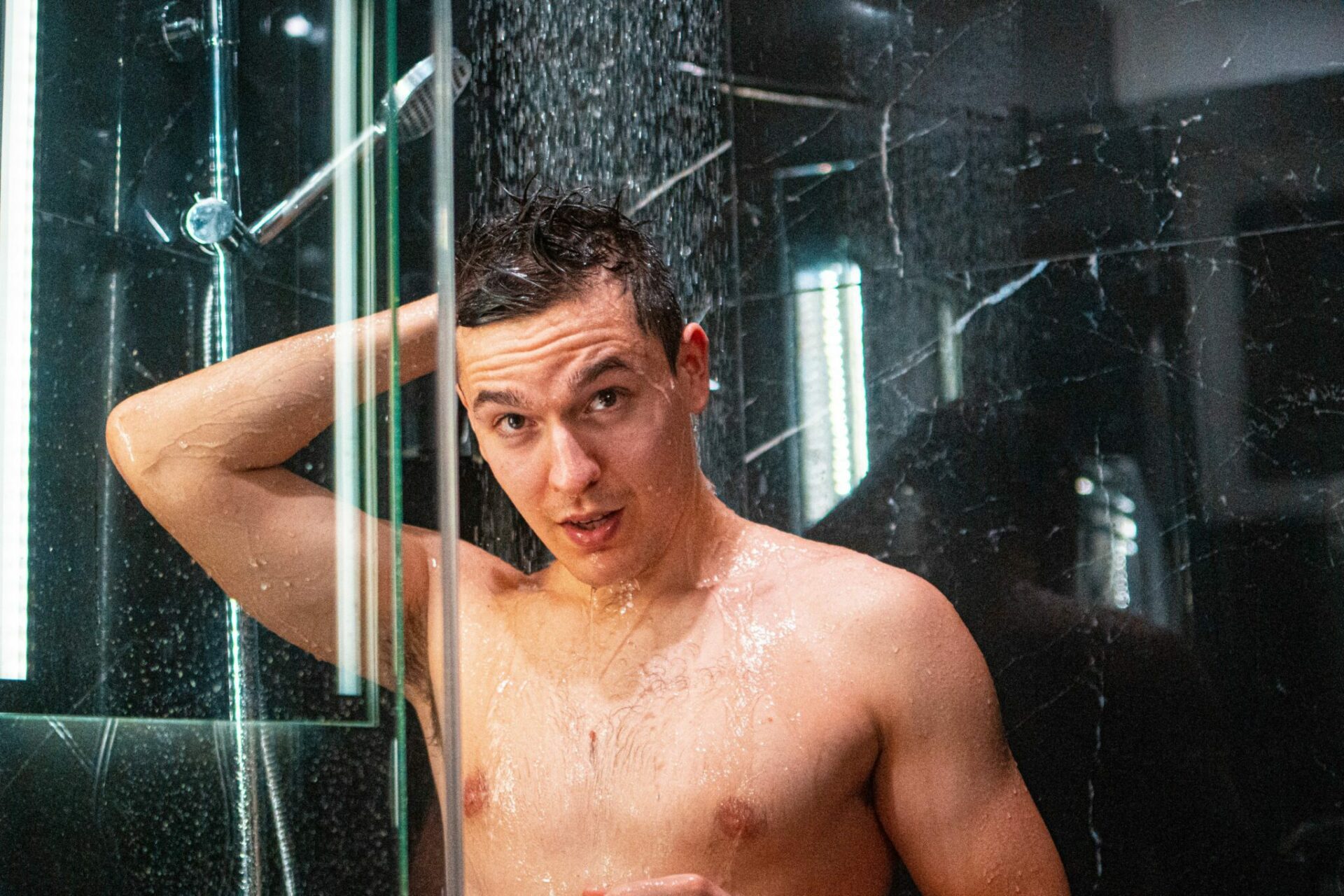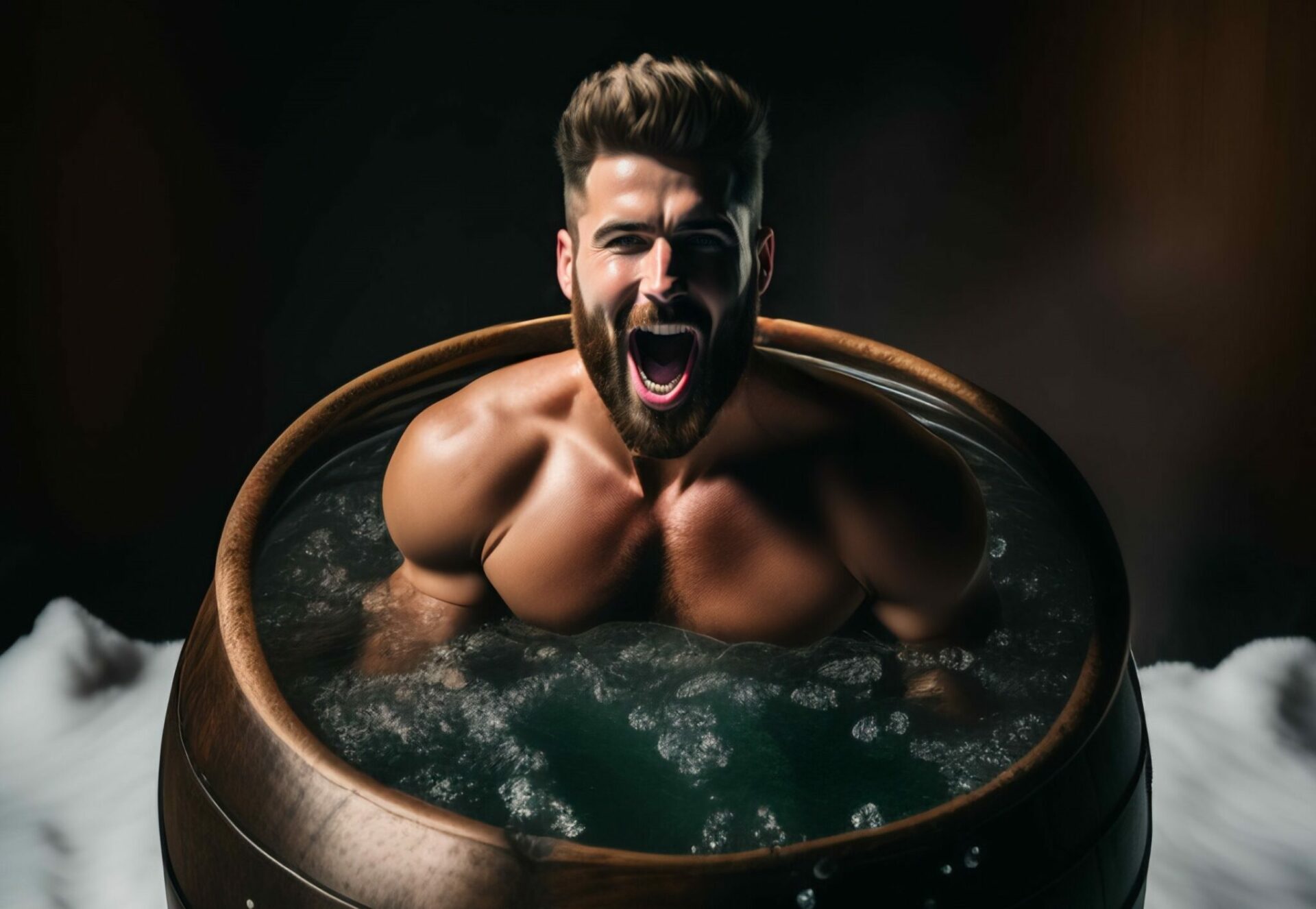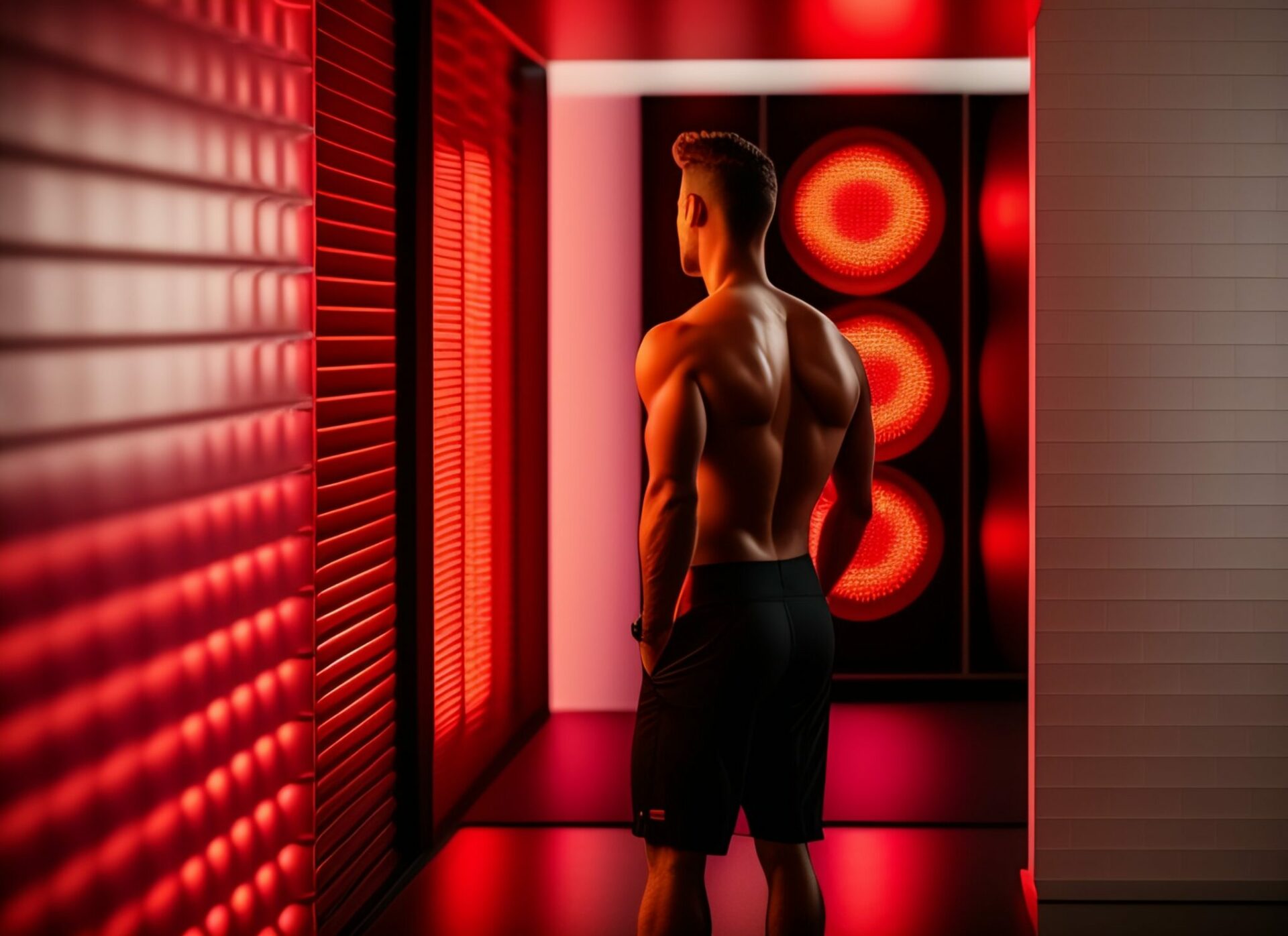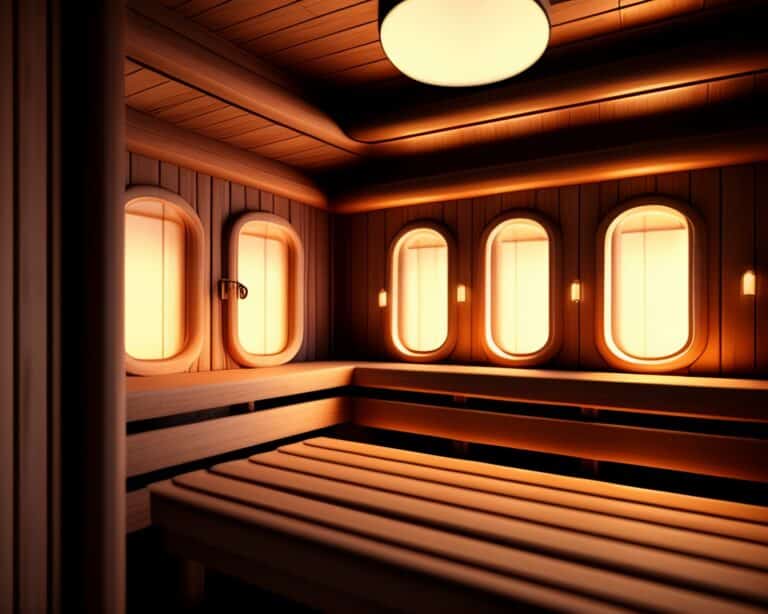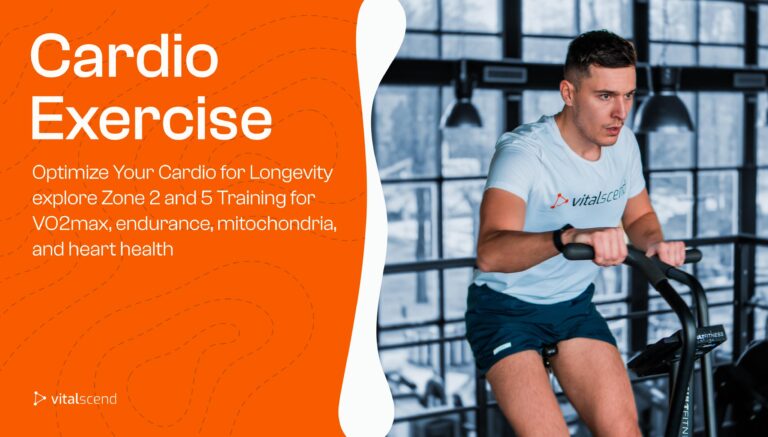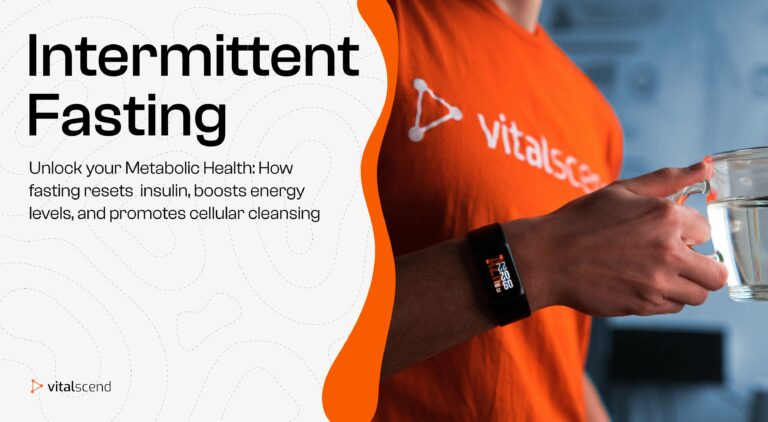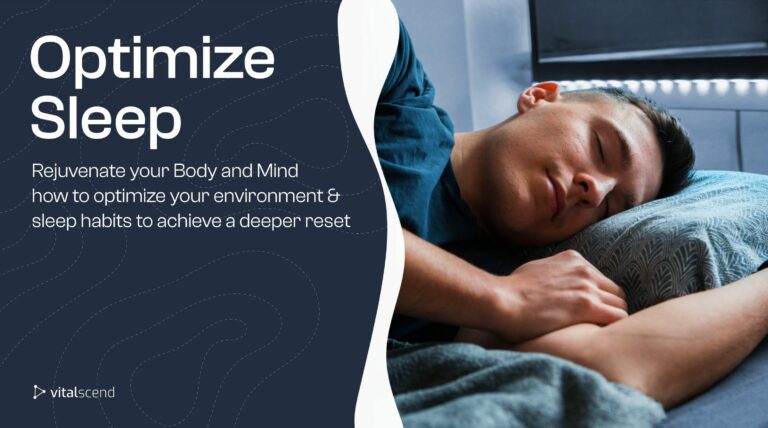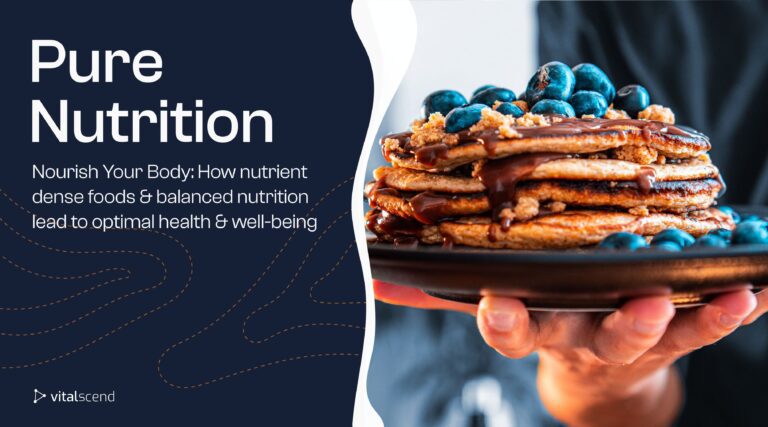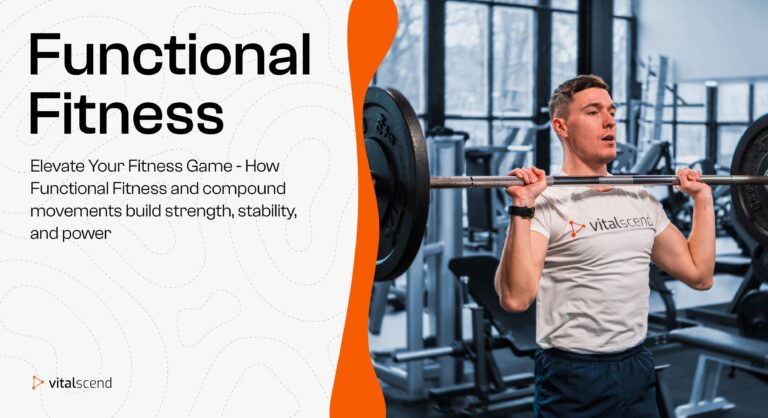The Power of Heat and Cold: Performance and Health
In the world of modern biohacking, saunas, and cold showers are key practices to optimize our biology for greater health and performance. The human body goes through various adaptations when placed in conditions of heat or cold. If a proper stimulus is placed, we may increase fat loss, reduce inflammation and boost brain function.
Thermal therapy is known to enhance one’s longevity, vitality, and overall well-being. We will explore the effects of cold exposure including cold showers and ice baths on fat loss, muscle recovery, and energy levels. We’ll also see how heat exposure like sauna and red light therapy can affect skin repair, immunity, and regeneration.
Heat and Cold Exposure
Adapting to heat and cold depends on different mechanisms in the body. Both make it more resilient to stressors and improve a myriad of other factors related to health.
Heat Exposure
Heat – traditional or infrared sauna is often used to place the body under heat conditions. We increase the sweating rate to lose heat through evaporation, so the body can keep its temperature at vital levels. Heart rate increases along with blood flow in the skin and muscles. Our metabolic rate increases as the demands placed on the body are higher, so we burn more calories.
Cold Exposure
Cold – some of the ways to do cold exposure include cryotherapy, cold showers, or sitting in an ice bath. The body has an opposite reaction, as it is trying to warm itself up. Vasoconstriction occurs, which is the narrowing of the blood vessels. Metabolic rate is greatly increased as we start to intensely shiver with our muscles, to generate more heat. Stress hormones like cortisol and norepinephrine are stimulated, triggering a fight-or-flight response.
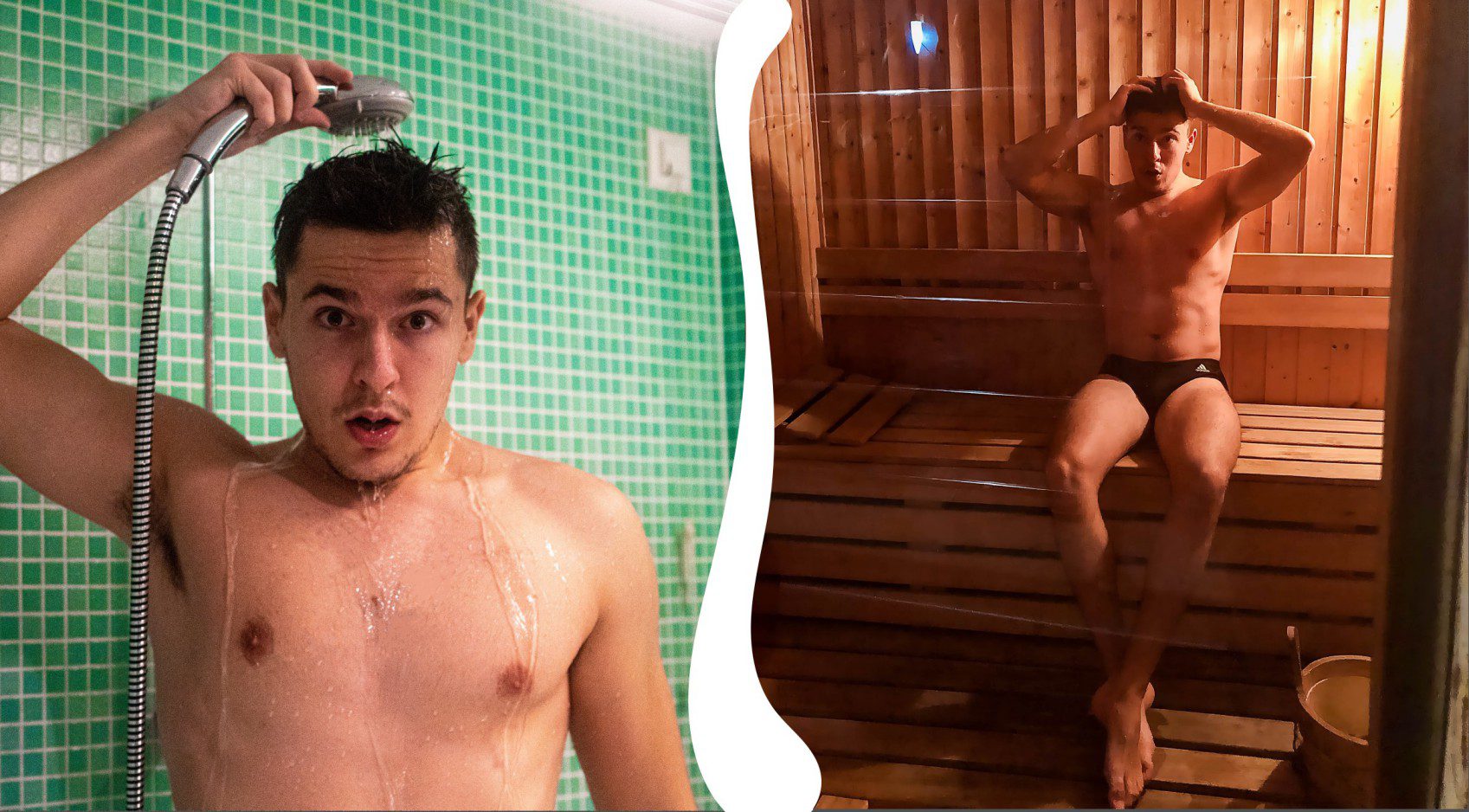
Heat Shock Proteins
One of the major adaptations to heat or cold exposure is the increased production of HSP or Heat Shock Proteins. These are specialized proteins that help protect cells and tissues from numerous stressors. Heat, cold, stress, and inflammation are some of these.
HSP are induced due to physiological stress and help repair damaged proteins, cellular structures, and DNA, plus assist numerous other functions related to immune system regulation. They’re crucial for cellular differentiation, growth, and survival. (1)
In simple terms, HSP makes the body more resilient to stress. That translates to greater regenerative capacity which has an anti-aging effect, promoting longevity.
Most of the biohacking tools we’re looking at, like an infrared sauna or a cold plunge aim at increasing HSP levels in the body, thus promoting vitality, resilience, and longevity.
Is ice bath good for muscle recovery?
Yes and No. Ice bath blunts the inflammatory response in the muscle. That’s good for overall regeneration, but since inflammation is a stimulus for regeneration in itself, it’s not the smartest idea to do right after a workout, especially for someone focused on muscle growth.
What are Heat Shock Proteins?
Heat shock proteins or HSP are specialized proteins that serve to protect cells and tissues from various stressors, including heat, cold, stress, and inflammation. One way to increase HSP is to practice cold exposure (cold showers, ice baths, cryotherapy) or heat exposure (sauna, hot bath, hot weather)
Are cold showers good for fat loss?
Yes. Cold exposure in general can help enhance fat loss, as long as an optimal stimulus is present. It does so by increasing muscle shivering, in order to heat the body up. This increases metabolic rate, thus burning more calories. It also increases brown fat synthesis which is metabolically more active, again burning more calories.
Cold Showers on Fat-Loss and Immunity
Taking a cold shower means showering with water that’s around 60-70 Fahrenheit (15.5-21 °C).
Cold showers can greatly affect one’s health, ability to handle stress, and metabolism. According to studies, taking cold showers can accelerate metabolism, encourage weight reduction, improve circulation, (2) (3) reduce inflammation, improve mood, (4) increase alertness, and support heart health.
- Hormetic stress: Hormesis is the process of inducing a low-dose stressor to promote adaptation that boosts resilience to it. The key is placing the body under an optimal stressor, so it can adapt. (5) (6)
- Fat-Loss: Cold makes us shiver which increases energy expenditure, burning more calories. (7) Another key adaptation to cold is the increased brown fat synthesis, which is linked to a faster metabolism and more effective fat burning. (8)
- Immunity: Furthermore, exposure to cold can enhance the effectiveness of immune cells such as T-cells, leukocytes, monocytes, and lymphocytes, which are essential for sustaining our immunity and fighting disease. (3) (9)
6 Reasons Why Cold Showers Are Good For You | 16 Studies
You’ve probably heard cold showers are good for you, but is it true? Cold showers became…
Benefits of Cold Exposure
Cold exposure has become so popular because of the Wim Hof method’s development that it is frequently used by business people, athletes, and biohackers, as a secret weapon. Research has really started looking into its potential advantages for weight loss, recovery, and longevity.
- Circulation and Heart Health: while cold induces vasoconstriction at first, the adaptation to cold leads to an enhanced blood flow, delivering more oxygen. Cold is a potent anti-inflammatory as well, reducing certain markers known to be detrimental to heart health.
- Fat-Loss: shivering during thermogenesis can greatly accelerate metabolic rate. On top of that, cold increases brown fat synthesis, which is more metabolically active and efficient at burning fat.
- Immunity Boost: even a single cold-water immersion can increase certain immune cells like TRF-alpha, monocytes, and lymphocytes which help fight disease.
- Insulin Sensitivity: people adapted to cold may have greater insulin sensitivity due to an improved function of the important glucose transporter, GLUT4.
- Muscle Recovery: cold right after a workout, may not be the smartest idea as it reduces inflammation, an important stimulus for regeneration. Cold increases potent antioxidants like glutathione and activates the Cori cycle, speeding up regeneration.
- Boosts Mood: one of the most popular takeaways from the Wim Hof journey, is cold can act as an anti-depressive. It activates the sympathetic, which with deep enough breathing can help tone the vagus nerve, thus improving relaxation and reducing stress.
- Cognitive Function: acutely, cold exposure reduces cognitive performance, as a huge shift in attention occurs. The brain freezes in a fight or flight mode. But afterward, greater wakefulness, alertness, and mental clarity follow.
7 Benefits of Cold Exposure: Fat-Loss, Immunity & Recovery
The rise of the Wim Hof method propelled cold exposure, so much, that it’s the secret…
Ice Bath for Muscle Recovery
The use of cold baths has grown among athletes seeking rapid muscle recovery. This entails immersing oneself for 5-15 minutes in water that is between 50-60 Fahrenheit or 10-15 °C.
Overall, taking a cold bath can accelerate muscle recovery and enhance sports performance. Athletes can recover more quickly and perform at their peak levels by minimizing muscle discomfort, inflammation, and swelling. (10) (11)
This technique has been shown to reduce Delayed Onset Muscle Soreness (DOMS), decrease muscle swelling and inflammation, and lower metabolism, all of which contribute to faster recovery. (12)
That being said, taking the plunge right after a workout can blunt the critical inflammatory response that stimulates regeneration. (13) (14) This is of great importance if one’s training is tailored toward maximal muscle hypertrophy, which heavily relies on that inflammation, inhibiting the anabolic adaptative response.
Ice Bath For Muscle Recovery – Should You Take The Plunge?
You’ve probably seen athletes enjoying an ice bath session after a hard workout. It supposedly helps…
Sauna on Fat-Loss and Cardiovascular Health
Saunas are still the staple of many spa centers and beauty saloons claiming to improve aesthetics, enhance fat loss and promote additional benefits for the heart, but is it true?
Heat exposure in a sauna can cause a variety of adaptations, including improved blood flow, more effective sweating, and muscular relaxation. The Finnish sauna is heated at around 70°C to 100°C, while infrared saunas use infrared light, are less humid, hot, and less intense.
- Fat-Loss: While being in a sauna does cause a 20–30% rise in metabolic rate, (15) this effect is insufficient to cause significant weight loss. However, using a sauna can indirectly enhance other aspects of weight loss, such as enhanced sweat production, cardiovascular health, stress relief, and muscle relaxation.
- Detoxification is one of the sauna’s key advantages that can change hormone balance and help you maintain your weight. (16) It’s vital to remember that dehydration, rather than fat burning, is the main cause of the quick weight loss that athletes who use saunas experience.
- Heart Health: The cardiovascular system is greatly affected by sauna therapy, and as a result, circulation is improved, blood pressure is reduced, heart function is superior, and arterial elasticity is enhanced. Saunas have been demonstrated to increase nitric oxide production, (17) which has been shown to improve cardiovascular health by lowering hyperexcitability, (18) lowering blood pressure, (19) and improving cholesterol profile, (20) eventually promoting relaxation.
Sauna for Fat Loss – Do Saunas Help You Lose Weight?
As it makes you lose a ton of sweat, it’s an obvious question. What’s the effectiveness…
Infrared Sauna for Energy & Muscle Recovery
A unique kind of sauna called an infrared sauna uses infrared heaters or lamps that emit infrared light, which generates heat that may penetrate the skin. It is said to have similar effects on the body, although one doesn’t need to endure extremely hot temperatures.
- Energy Boost: (21) Due to increased mitochondrial function, heat exposure in a sauna can result in an increase in energy levels. These are the cells in our body that help produce energy through aerobic metabolism. Also known to reduce fatigue (22) and speed up metabolism, infrared saunas raise energy expenditure.
- Muscle Recovery: (23) (24) By encouraging the regeneration and healing of muscle tissue that has been damaged, infrared saunas can speed up muscle recovery. Heat shock proteins are vital for rebuilding and regenerating damaged cells and tissues, stimulated with an IR sauna. Infrared saunas can therefore help minimize muscular soreness (DOMS) and inflammation after exercise, facilitating recovery and reducing the chance of injury.
Also, using an infrared sauna helps enhance blood flow and circulation, which can assist the muscles in receiving crucial nutrients and oxygen for faster recovery. (25)
What Is an Infrared Sauna? Uses, Benefits, and Dangers
Are you in for a detox, sweat, relaxation, and recovery? Infrared saunas have been quite popular…
Can sauna help you lose weight?
No, and Yes. Saunas are not superior in promoting weight loss, most of it is water loss. However, indirectly sauna affects factors like toxin removal, heat shock proteins, metabolic health, and stress reduction which can definitely, enhance weight loss.
What is an infrared sauna good for?
An infrared sauna is a sauna with large light panels or heaters that emit infrared light. This light is known to penetrate deep tissues and help recover damaged cells, proteins, and micro-injuries. So, muscle recovery, skin repair, and anti-aging are its main uses.
Red light therapy and anti-aging
Red light therapy is done by exposing the body to red light, which is known to promote skin healing. From reducing wrinkles to improving skin complexity, elasticity, and skin structure, Red light might have a significant effect on longevity.
Red Light Therapy on Anti-Aging and Skin
Exposing the skin to red light with wavelengths between 620 and 700 nanometers is known as red light therapy (RLT), and it may have advantages such as promoting muscle regeneration and skin repair.
Red Light Therapy is heavily marketed in resorts, fitness centers, and spa facilities. There are several alternatives, ranging from small, handheld devices that look like laser gadgets to larger, window-like LED devices that generate intense red light, and even full-body capsules or 360 RLT Beds.
- Skin Repair: Red light therapy activates the photobiomodulation process, which stimulates the skin cells by penetrating deeply into the dermis. The red light energy is absorbed by the cells during this process and improves cellular function by increasing the synthesis of collagen, which is crucial for skin restoration. RLT also promotes cell proliferation, which assists in skin repair. (26) (27) (28)
- Anti-Aging: RLT has a strong detox potential, reducing numerous toxins from the body which promotes longevity. It can reduce wrinkles and improve skin complexity, giving a more youthful look. Red light may also enhance skin structure and skin roughness while making it more elastic as it increases elastin fibers and collagen. (29) (30) (31)
Top 6 Benefits of Red Light Therapy: Skin Repair, Muscle Recovery, and
Hacking your biology with the use of red light seems over the top, doesn’t it? The…
Bullet Points
- Heat and Cold exposure have long been used to enhance health, as the adaptations to such changes lead to greater resilience, adaptability, and regeneration capacity.
- HSP or heat shock proteins are specialized proteins increased by numerous stressors. Heat or Cold increases HSP levels which are known to help cellular repair, growth, development, and survival.
- Cold exposure can stimulate immune function, improve mood, reduce inflammation, and lead to fat loss. It has grown in popularity with the progression of the Wim Hof Method.
- Ways to do cold exposure include cold showers (15.5-21 °C), cryotherapy, ice bath, or cold weather exposure. Mainly done to enhance muscle recovery, boost energy levels and improve mental clarity.
- Heat exposure improves sweat efficiency, heart health and promotes muscle relaxation. It’s widely used by athletes for enhancing athletic performance, as well as in spas and resorts for wellness and aesthetics.
- The traditional sauna is hot and humid, leading to improved circulation, detox, and heart health. Infrared is more catered toward muscle recovery, skin repair, and anti-aging as the IR light which penetrates deep helps repair tissues.
- Red Light Therapy is exposure to red light, which is known to enhance skin complexity, and skin elasticity, and boost collagen production – giving a nice youthful look. It’s also used for muscle relaxation and sleep enhancement.

